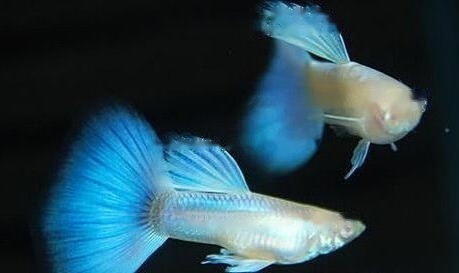White peacock fish inhabits warm springs and overgrown ditches and canals. Occurs in a variety of habitats, from low-altitude, high-turbidity ponds, canals, and ditches to high-altitude pristine mountain streams. My friends have learned about its living environment, and some owners who raise less fish like it very much. If you want to raise white guppies and want to know how to raise them, you might as well follow the editor to learn about it!

Breeding method of white guppy:
The first step: clean and sterilized fish tank
To raise guppies, you must first prepare a cleaned and sterilized fish tank. When sterilizing the fish tank, after the fish tank is stabilized, first add a small amount of boiling water to let the glass adapt to the temperature, and finally add an appropriate amount of boiling water for disinfection. This is mainly to prevent the glass from bursting due to sudden high heat. After the fish tank has been disinfected, it is necessary to set up the water used for raising fish. Let the tap water stand for 3 to 5 days to evaporate the chlorine in the water. Then add water into the sterilized tank, add nitrifying bacteria, and continuously oxygenate for 24 hours, then a nitrification system can be initially established, and fish can be placed in this water.
The second step: pick up the fish
After buying the fry, don't rush to open the box, and open the box in a dark place when you go home. Avoid vibration or rollover caused by excessive movement on the way. Because the fish will be weak and mentally nervous after long-distance and long-term transportation in the environment of fasting and no light, so special care must be taken to prevent the fish from being frightened, which will cause the fish to be injured by hitting the bag or the tank, or cause the tail to be pinched due to panic. and so on. Therefore, all work must be handled with gentleness and care.
The third step: adding water
Adding water is an important job, and it is also a very cumbersome operation. But if you want to raise fish well, you must do it carefully and patiently, to ensure that the fish can adapt to our breeding environment smoothly at first, and lay a good foundation for normal rearing in the future. The work of adding water mainly has the following steps:
![[Dog Training 5] The training method of pet dog dining etiquette](/static/img/12192/12192_1.jpg)




